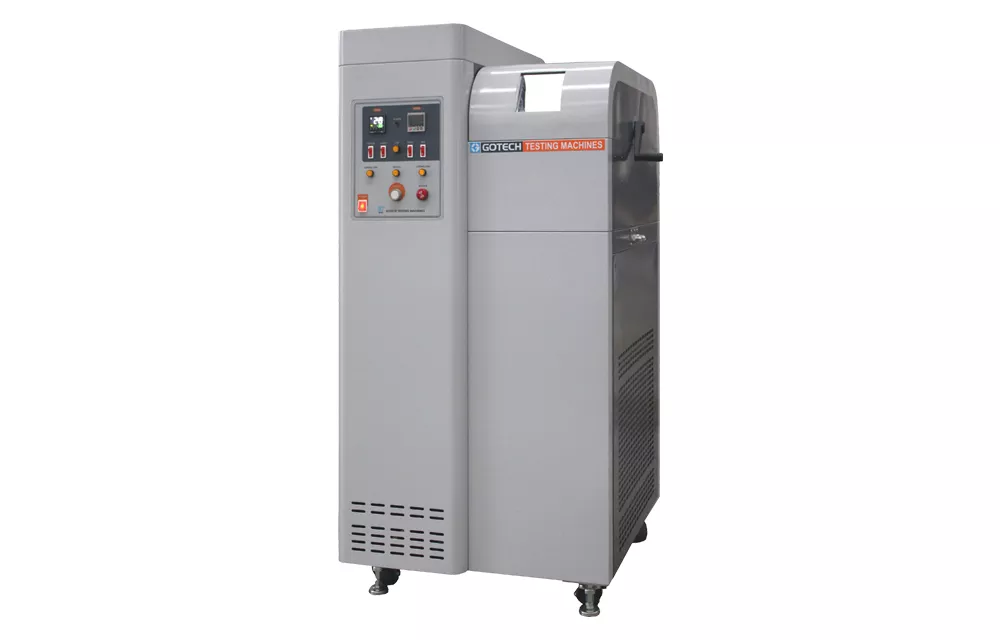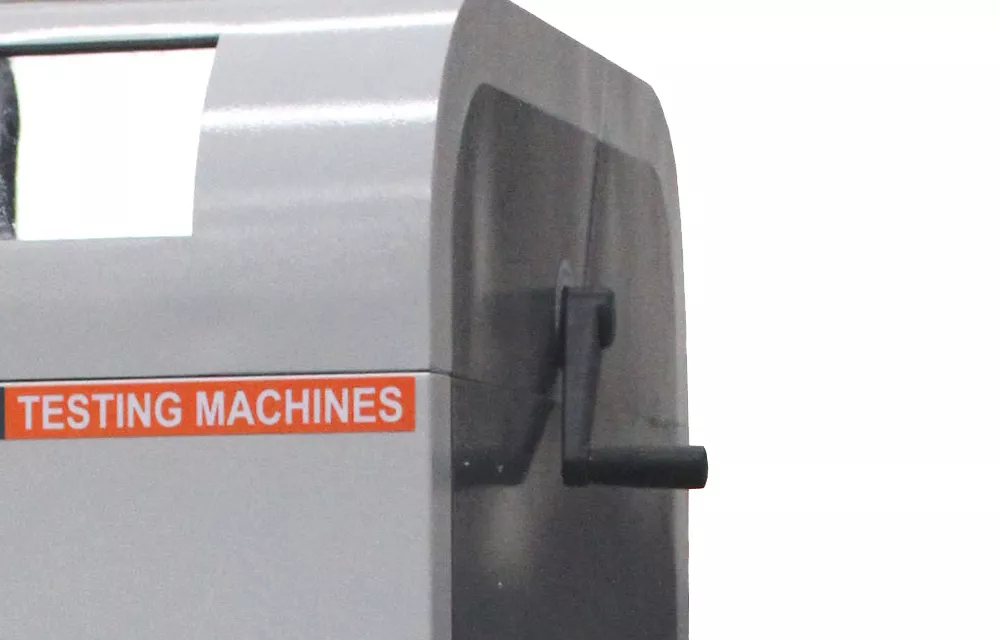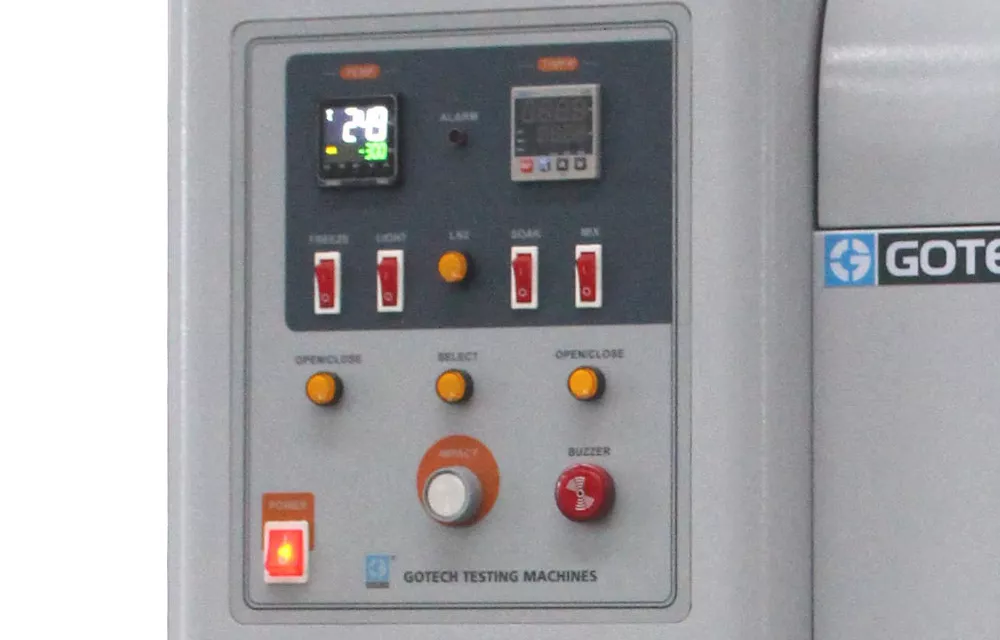





- The GT-7061-NDA is specifically designed to evaluate the low-temperature brittleness of plastics or vulcanized rubber when subjected to impact under specified conditions.
- This instrument is utilized to assess the ability of materials to withstand cold environment for industrial applications.
-
Standards
- GB/T 15256-2014
- ISO 812:2017
- GB/T 5470-2008
- ISO 974:2000
- ASTM D746-2014
- ASTM D2137-11(2018)
- JIS K 6261-2006
- BS 903 A25-1992
PRINCIPLE
To conduct brittleness temperature testing, test specimens are immersed in a low-temperature bath for a specified time at test temperature. They are then subjected to impact to evaluate their brittleness temperature. This brittleness temperature tester provides valuable insights into the durability and reliability of materials in extreme environments, enabling manufacturers to make adjustment to improve product design and material selection.
Wide applicability:
Well-suited for a wide range of industries such as plastics, rubber, material science, petrochemical, chemistry, engineering, construction, and industrial manufacturing.
Authentic simulation:
Simulates materials impact scenarios in cold environments to assess their performance and durability under such conditions.
Impact resistance assessment:
Enables manufacturers to identify the temperature at which specimens fail under impact testing.
Quality assurance:
Enable manufacturers to maintain the quality and performance of materials during production processes to meet specific quality standard requirements.
Product design optimization:
Assists manufacturers in optimizing materials and product design through the assessment of their brittleness temperature.
Standard conformity:
Ensures that products meet industry standards and satisfy quality expectations in the market.
-

Intuitive interface
The intuitive and easy-to-use interface allows operators to quickly learn how to operate the instrument.

Automatic operation
Features automatic operation, including automatic temperature control, as well as button-controlled striker and safety shield, minimizing the risk of human error.

High efficiency
Equipped with compressor system to conduct cooling rapidly and effectively.

Precise control system
Utilizes advanced control system to maintain consistent and precise test conditions, ensuring accurate test results.

Reliability and stability
Built with durable mechanical and electrical components to ensure accuracy and long-term durability.

Safety design
The brittleness temperature test is conducted within a digital controlled and semi-enclosed space, reducing the chances of human error.
-
 左右滑動看表格
左右滑動看表格
*Product design and specifications are subject to change without notice.Controller Temp. controller+PLC Temp. range Ambient temp. to -70℃ (compressor cooling) Optional: -70℃ to -120℃ (LN2 cooling) Temp. display resolution 0.1℃ Temp. accuracy ±1℃ (Ambient temp. to -70℃; compressor cooling) ±2℃ (-70℃ to -120℃; LN2 cooling) Striking speed 2.0±0.2 m/s Radius of striker edge 1.6mm±0.1mm Clearance between striking arm and specimen clamp A type: 6.4mm±0.2mm (6.4mm±0.3mm/6.35mm±0.25mm) B type: 2.0mm±0.1mm Interior material SUS316L Dimensions (W×D×H) 81cm×95cm×150cm Weight (approx.) 330kg Power 3∮, 380V/415V, 50HZ/60Hz(or specify)
-
-
Details
Standards
- GB/T 15256-2014
- ISO 812:2017
- GB/T 5470-2008
- ISO 974:2000
- ASTM D746-2014
- ASTM D2137-11(2018)
- JIS K 6261-2006
- BS 903 A25-1992
PRINCIPLE
To conduct brittleness temperature testing, test specimens are immersed in a low-temperature bath for a specified time at test temperature. They are then subjected to impact to evaluate their brittleness temperature. This brittleness temperature tester provides valuable insights into the durability and reliability of materials in extreme environments, enabling manufacturers to make adjustment to improve product design and material selection.
Wide applicability:
Well-suited for a wide range of industries such as plastics, rubber, material science, petrochemical, chemistry, engineering, construction, and industrial manufacturing.
Authentic simulation:
Simulates materials impact scenarios in cold environments to assess their performance and durability under such conditions.
Impact resistance assessment:
Enables manufacturers to identify the temperature at which specimens fail under impact testing.
Quality assurance:
Enable manufacturers to maintain the quality and performance of materials during production processes to meet specific quality standard requirements.
Product design optimization:
Assists manufacturers in optimizing materials and product design through the assessment of their brittleness temperature.
Standard conformity:
Ensures that products meet industry standards and satisfy quality expectations in the market.
-
Features

Intuitive interface
The intuitive and easy-to-use interface allows operators to quickly learn how to operate the instrument.

Automatic operation
Features automatic operation, including automatic temperature control, as well as button-controlled striker and safety shield, minimizing the risk of human error.

High efficiency
Equipped with compressor system to conduct cooling rapidly and effectively.

Precise control system
Utilizes advanced control system to maintain consistent and precise test conditions, ensuring accurate test results.

Reliability and stability
Built with durable mechanical and electrical components to ensure accuracy and long-term durability.

Safety design
The brittleness temperature test is conducted within a digital controlled and semi-enclosed space, reducing the chances of human error.
-
Specifications
 左右滑動看表格
左右滑動看表格
*Product design and specifications are subject to change without notice.Controller Temp. controller+PLC Temp. range Ambient temp. to -70℃ (compressor cooling) Optional: -70℃ to -120℃ (LN2 cooling) Temp. display resolution 0.1℃ Temp. accuracy ±1℃ (Ambient temp. to -70℃; compressor cooling) ±2℃ (-70℃ to -120℃; LN2 cooling) Striking speed 2.0±0.2 m/s Radius of striker edge 1.6mm±0.1mm Clearance between striking arm and specimen clamp A type: 6.4mm±0.2mm (6.4mm±0.3mm/6.35mm±0.25mm) B type: 2.0mm±0.1mm Interior material SUS316L Dimensions (W×D×H) 81cm×95cm×150cm Weight (approx.) 330kg Power 3∮, 380V/415V, 50HZ/60Hz(or specify)
-
Video

